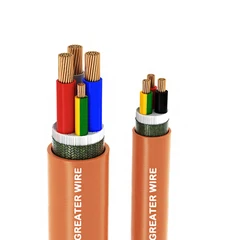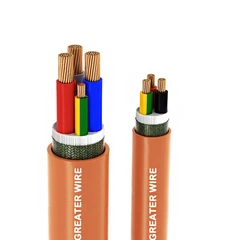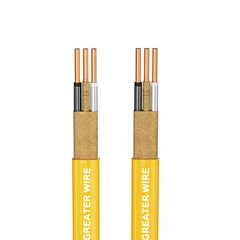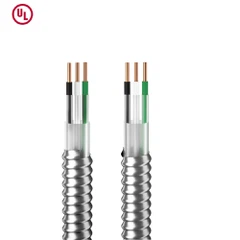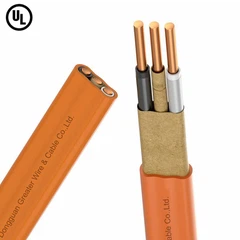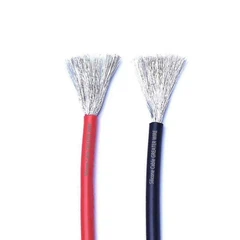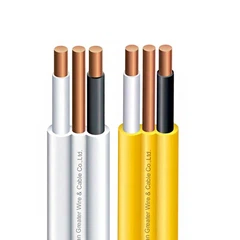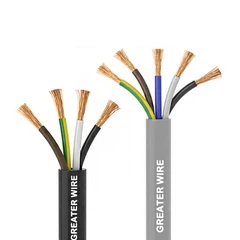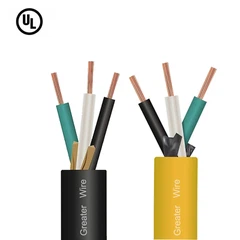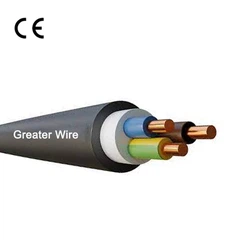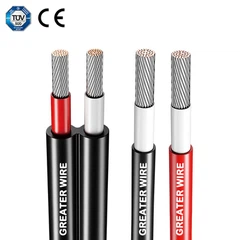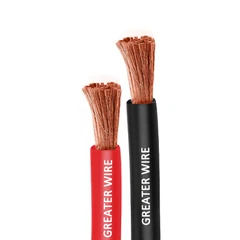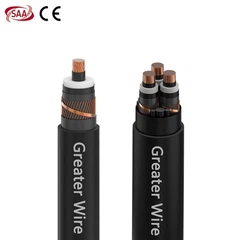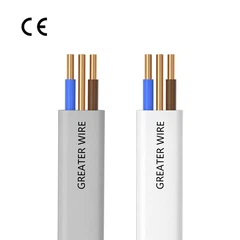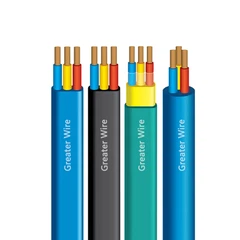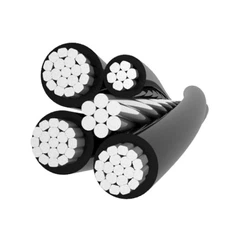1. Understanding XHHW and XHHW-2 Wire
Definition and Construction
XHHW stands for Cross-linked Polyethylene (XLPE) High Heat-Resistant and Water-Resistant Wire. It is a thermoset-insulated cable designed for durability in demanding environments. The "XHHW-2" variant, introduced later, offers enhanced temperature ratings (90°C in both dry and wet locations) compared to the original XHHW (75°C in wet locations)5. Both types use cross-linked polyethylene (XLPE) insulation, which provides superior resistance to heat, moisture, and abrasion compared to thermoplastic materials like PVC.
Key Specifications
Voltage Rating: 600 volts (standard).
Temperature Range:
XHHW: Up to 90°C in dry locations, 75°C in wet locations.
XHHW-2: 90°C in both dry and wet environments.
Conductor Material: Typically aluminum (AA-8000 series) or copper, with stranding optimized for flexibility.
Insulation Thickness: Varies by conductor size (e.g., 45–65 mils for larger AWG sizes).
2. Voltage Rating Standards and Compliance
Industry Standards
The voltage rating of XHHW wire is governed by multiple standards:
UL 44: Specifies requirements for thermoset-insulated wires, including XHHW-2.
NEC (National Electrical Code): Defines installation guidelines, such as NEC 310.104 for conductor applications.
ASTM B801/B836: Covers aluminum conductor standards.
RoHS Compliance: Ensures environmental safety by restricting hazardous substances.
Voltage Representation (U0/U)
Cable voltage ratings are often expressed as U0/U, where:
U0: Rated voltage between conductor and ground (e.g., 600V).
U: Rated voltage between conductors (e.g., 1,000V).
For example, a marking of "600V/1kV" indicates the wire is suitable for 600V phase-to-ground and 1kV phase-to-phase systems.
This dual rating ensures compatibility with grid voltage fluctuations and transient surges.
3. Factors Influencing Voltage Capacity
Insulation Material
XLPE insulation in XHHW-2 provides:
Higher dielectric strength compared to PVC.
Resistance to thermal degradation, even at 90°C.
Lower smoke emission during combustion, enhancing safety.
Environmental Conditions
Moisture Resistance: XHHW-2's water-resistant insulation allows use in damp or underground installations.
Temperature: Operating at higher temperatures (e.g., 90°C) may slightly reduce voltage tolerance over time due to insulation aging.
Conductor Size and Stranding
Larger conductors (e.g., 4/0 AWG) have thicker insulation to maintain voltage integrity. Kris-Tech's specifications show insulation thickness ranging from 30 mils (for 14 AWG) to 65 mils (for 500 MCM).
4. Comparison with THHN/THWN Wires
While XHHW-2 and THHN/THWN share a 600V rating, key differences include:
| Parameter | XHHW-2/XLPE | THHN/THWN |
|---|---|---|
| Insulation | Cross-linked polyethylene | PVC with nylon jacket |
| Max Temperature | 90°C (wet/dry) | 90°C (THWN), 75°C (THHN) |
| Flexibility | Moderate | Higher due to nylon |
| Cost | Higher | Lower |
| Fire Safety | Low smoke emission | Flame-retardant PVC |
XHHW-2 is preferred for high-stress environments (e.g., industrial feeders), while THHN/THWN suits cost-sensitive projects.
5. Applications of XHHW-2 Wire
Common Uses
Power Distribution: Service entrances, feeders, and branch circuits.
Industrial Wiring: Machinery, control panels, and conveyor systems.
Outdoor Installations: Conduits, underground raceways, and wet locations.
Case Study: Nexans Euromold T-Joints
Nexans' XHHW-2 cables are rated for 600V and 90°C, making them ideal for high-rise buildings and damp environments. Their AA-8000 aluminum conductors meet ASTM standards for flexibility and conductivity.
6. Voltage Safety Margins
NEC guidelines recommend operating cables at ≤75% of rated voltage under normal conditions. Temporary surges (e.g., 120% of rating) are permissible but should not exceed 1 hour8. For a 600V XHHW-2 wire:
Continuous Use: ≤450V.
Short-Term Surge: ≤720V.
7. Global Standards and Variations
North America: XHHW-2 aligns with UL and NEC standards.
Europe: Similar cables (e.g., RW90) may use a 1kV rating under IEC standards.
Asia: Manufacturers like Nexans adapt designs to local grid requirements (e.g., 12–20kV systems).
8. Future Trends
Higher Voltage Ratings: Emerging XLPE formulations may enable 1kV+ ratings for XHHW-2.
Sustainability: Increased use of recyclable aluminum conductors to meet RoHS and REACH standards.

